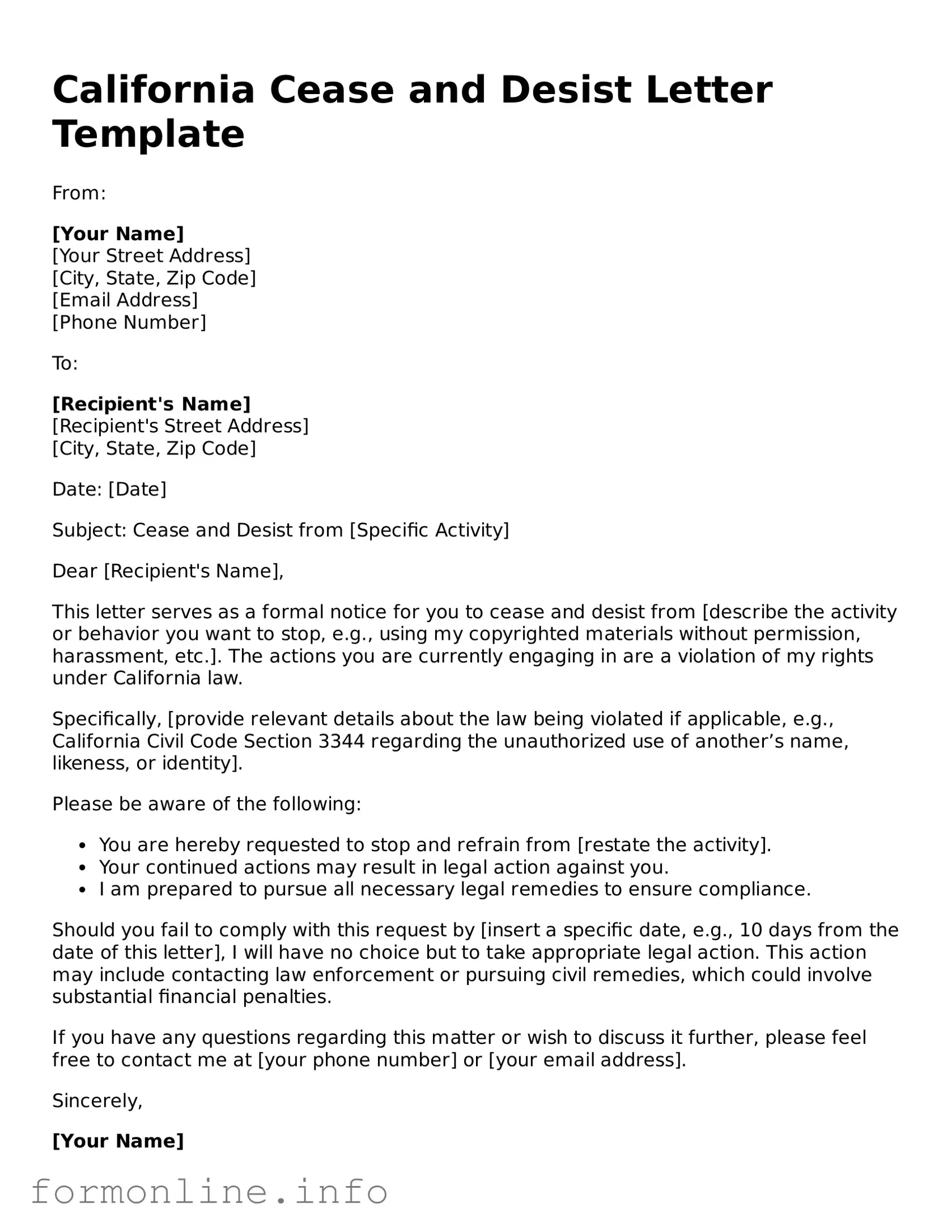A Demand Letter serves a similar purpose to a Cease and Desist Letter, as both documents aim to address grievances before escalating to legal action. A Demand Letter typically outlines a specific request for action or compensation from the recipient. It clearly states the issue at hand and sets a deadline for a response, creating a sense of urgency. While a Cease and Desist Letter focuses on stopping a particular action, a Demand Letter may also seek restitution or compliance with certain demands.
A Settlement Agreement is another document that shares similarities with a Cease and Desist Letter. While a Cease and Desist Letter is often a precursor to legal action, a Settlement Agreement is typically used after a dispute has arisen. It formalizes the terms agreed upon by the parties involved to resolve the issue without further litigation. Both documents aim to prevent ongoing disputes, but a Settlement Agreement is more comprehensive in nature, detailing the obligations of each party.
An Injunction is a legal order that can be compared to a Cease and Desist Letter, as both seek to prevent certain actions. However, an Injunction is issued by a court and carries the force of law. It requires the recipient to stop a specific action immediately. In contrast, a Cease and Desist Letter serves as a warning and does not have the same legal weight. The Cease and Desist Letter can often be a precursor to seeking an Injunction if the recipient does not comply.
A Notice of Violation is similar in intent to a Cease and Desist Letter, as both documents inform the recipient of an alleged infringement or wrongdoing. A Notice of Violation is commonly used in regulatory contexts, such as environmental or zoning issues, to inform individuals or organizations that they are not in compliance with specific laws or regulations. Both documents aim to prompt corrective action, but a Notice of Violation often involves a formal regulatory process.
A Non-Disclosure Agreement (NDA) can also be likened to a Cease and Desist Letter, particularly in the context of protecting confidential information. While an NDA is a contract that prohibits the sharing of sensitive information, a Cease and Desist Letter can be used to enforce the terms of an NDA if a breach occurs. Both documents are essential for safeguarding interests and preventing unauthorized actions, but they operate in different contexts.
A Release of Liability can share similarities with a Cease and Desist Letter, especially in situations where one party seeks to prevent future claims. A Release of Liability is a legal document that protects one party from being held responsible for certain actions or events. While a Cease and Desist Letter seeks to stop ongoing or future actions, a Release of Liability aims to limit liability for past actions. Both documents serve to mitigate risks, but they do so in different ways.
In the realm of real estate transactions, understanding the nuances of different legal documents is crucial. A key form that often arises is the Quitclaim Deed, which allows for the transfer of property ownership without guaranteeing the title's validity. This is particularly useful in situations involving acquaintances or family members, where trust is inherent. For more detailed information on how to properly execute this form, visit https://georgiapdf.com/, where you can find resources that can assist you through the process.
A Letter of Intent (LOI) can also be considered similar to a Cease and Desist Letter in that both documents express intentions and expectations between parties. An LOI outlines the preliminary terms of an agreement before formal contracts are drafted. While a Cease and Desist Letter communicates a demand to stop specific actions, an LOI sets the stage for future negotiations. Both documents are crucial in establishing clear communication and expectations.
Finally, a Memorandum of Understanding (MOU) can be compared to a Cease and Desist Letter in terms of establishing an agreement between parties. An MOU outlines the intentions and responsibilities of each party but is generally not legally binding. A Cease and Desist Letter, on the other hand, is often a warning that legal action may follow if the recipient does not comply. Both documents aim to clarify expectations and prevent misunderstandings, but they differ in their legal implications.
